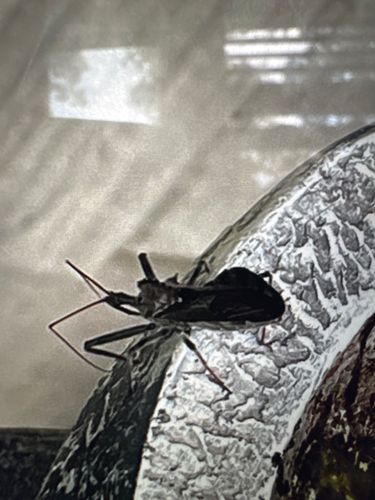Wheel Bug
Scientific Name: Arilus cristatus
Order & Family: Hemiptera, Reduviidae
Size: Typically 1 to 1.5 inches (25-38 mm) long.

Natural Habitat
Gardens, orchards, fields, and wooded areas across North America, often found on trees and shrubs.
Diet & Feeding
Predatory, feeding on a wide variety of other insects including caterpillars, Japanese beetles, assassin bugs (sometimes even their own species), and other soft-bodied prey. They use their strong proboscis to inject paralyzing and liquefying saliva into their prey, then suck out the bodily fluids.
Behavior Patterns
Nocturnal hunters, though sometimes active during the day. They have a distinctive 'cogwheel' or 'gear-like' crest on their thorax. They move slowly and are generally solitary. When threatened, they may attempt to fly away or deliver a painful bite.
Risks & Benefits
Benefits: Considered beneficial insects due to their role in controlling various garden and agricultural pests. Risks: They can deliver a painful bite if handled, which causes a sharp stinging sensation, swelling, and can take several days to disappear. They are not venomous in a way that is dangerous to humans, but the bite is highly unpleasant. They can also sometimes prey on other beneficial insects.
Identified on: 9/20/2025